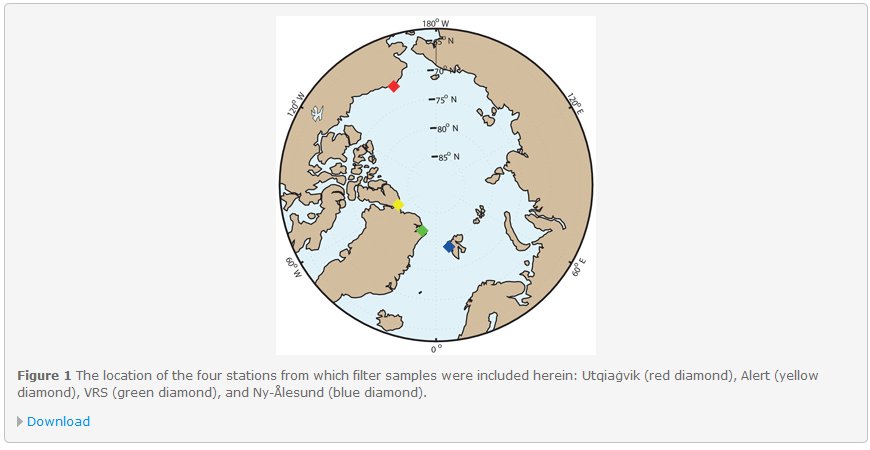Annual variability of ice-nucleating particle concentrations at different Arctic locations
New publication by Heike Wex, Lin Huang, Wendy Zhang, Hayley Hung, Rita Traversi, Silvia Becagli, Rebecca J. Sheesley, Claire E. Moffett, Tate E. Barrett, Rossana Bossi, Henrik Skov, Anja Hünerbein, Jasmin Lubitz, Mareike Löffler, Olivia Linke, Markus Hartmann, Paul Herenz, and Frank Stratmann

Abstract
Number concentrations of ice-nucleating particles (NINP) in the Arctic were derived from ground-based filter samples. Examined samples had been collected in Alert (Nunavut, northern Canadian archipelago on Ellesmere Island), Utqiaġvik, formerly known as Barrow (Alaska), Ny-Ålesund (Svalbard), and at the Villum Research Station (VRS; northern Greenland). For the former two stations, examined filters span a full yearly cycle. For VRS, 10 weekly samples, mostly from different months of one year, were included. Samples from Ny-Ålesund were collected during the months from March until September of one year. At all four stations, highest concentrations were found in the summer months from roughly June to September. For those stations with sufficient data coverage, an annual cycle can be seen. The spectra of NINP observed at the highest temperatures, i.e., those obtained for summer months, showed the presence of INPs that nucleate ice up to −5 ∘C. Although the nature of these highly ice-active INPs could not be determined in this study, it often has been described in the literature that ice activity observed at such high temperatures originates from the presence of ice-active material of biogenic origin. Spectra observed at the lowest temperatures, i.e., those derived for winter months, were on the lower end of the respective values from the literature on Arctic INPs or INPs from midlatitude continental sites, to which a comparison is presented herein. An analysis concerning the origin of INPs that were ice active at high temperatures was carried out using back trajectories and satellite information. Both terrestrial locations in the Arctic and the adjacent sea were found to be possible source areas for highly active INPs.
Atmos. Chem. Phys., 19, 5293–5311, 2019
